The Covid-19 crisis has changed our lives in many ways. It affects our continuing process of learning and improvement.
Conventional in-person classroom learning is now morphing into e-learning. Traditional learning is limited by time, space, personnel, and available resources. But online learning can happen wherever you are, with options that are unlimited in terms of courses, programs, content, scope, approach, resources, and faculty.

There are new and innovative ways for you to make refinements in your area of expertise. Since you may have extra time on your hands, you can develop complementary skills by exploring seemingly unrelated but supplemental subjects. You can do this through remote, virtual classes in the comfort and convenience of your home or studio. And you can progress at your own pace.
In conventional classrooms with synchronous learning, students are expected to keep up with the live lecture by taking
notes, finishing reading assignments, and completing projects on time. This is regardless of their individual rates of
processing information and time management skills. Online classes are able to offer asynchronous learning. This allows students to move through a variety of materials at their preferred pace and on their own time schedule. If there is a recorded video lecture, students can watch it repeatedly or selectively view what they need to focus on.
Online learning is more flexible than traditional, in-person classroom learning. There is little or no travel involved. It’s easier to find a balance between school/work and other personal and life commitments. You can wear comfortable clothes and drink your favorite refreshments.
For many musicians, online learning may be unfamiliar territory, requiring you to have up-to-date equipment, software, and being somewhat tech savvy. The process involves changing habits and accustomed ways of approaching learning and interacting with other students and teachers. Since changes are usually scary and uncomfortable, resistance is normal at first. You can start to move past your resistance with a firm resolve to be much better in at least one area several months from now.
There are many ways for you to get the most from e-learning resources. First, if you don’t have high speed internet access, find a way to access it. This is a good time to improve your computer literacy and tech skills. Establish a dedicated space in your home where you can work. Eliminate potential sources of distractions. Get a good pair of headphones so you can listen to lectures as well as to play music or white noise for covering up distractions.

Decide the specific area(s) that you most want to improve or learn. These could be refining your skills in your main area of expertise, developing a different but related skill set, and/or starting to learn totally different skills from the beginning. Before you begin, you need to establish your learning goals, time frame, and budget in every area that you choose. Practice due diligence for every online program or resource that you consider using, including faculty credentials and prior results with their online students.
Set different outcome goals: longterm (for when life is somewhat back to normal), intermediate (3-6 months while the
pandemic continues), one month from now, and this week. These result-oriented goals need to be reasonable yet
challenging in what you intend to accomplish by target dates. They should be in measurable terms, like playing a certain piece of music at a specific tempo, or becoming proficient with a new skill.
After setting outcome goals, figure out what process you need to do in order to achieve the intended results on or before the target dates. These may include private or group lessons, technical exercises, playing with a metronome or tuner, run throughs, and remotely performing repertoire for colleagues or teachers. Next, establish your practice goals and the weekly structure and schedule of your daily practice or study time. These are the specific ways you will achieve your process and outcome goals.
Finally, set mental goals to reinforce your physical learning and help you accomplish all the other goals. These include
imagining your practice sessions the way you’d like them to go, hearing, seeing, and feeling yourself achieving your process goals on the way to performing the new skills in line with your outcome goals. This may be a great time to work on other mental skills, like focusing past distractions, building confidence, or developing mental toughness. You should specify rewards for accomplishing your monthly outcome goals on time.
Before you begin your program(s), get all the necessary materials and resources. These include books, calendars, planners, apps, instructional videos, and flash cards, as well as setting up access to Zoom, Skype, phone conferencing, YouTube, or other online communication platforms. You may need to follow social media like Instagram or Facebook, listen to audio programs, watch pre-recorded lectures and Ted-ed talks, join discussion groups, write emails, post on message boards, play instructional games, attend virtual web conferences, and participate in study groups.
After assembling whatever you will need, you should get everything organized. Prepare as though you are getting ready to take a “real” class. I recommend that you get separate notebooks or journals for each virtual class. They will help you keep track of important lessons, insights, key details, and unanswered questions. You can also print out the course outline, syllabus, requirements, assignments, and forms.

Create to-do lists for each course, prioritized and color coded according to urgent (red), somewhat urgent (green), and less urgent (blue). Set reminders for upcoming deadlines! You can do this with your cell phone or put them on your calendar, day planner, or whatever will remind you of due dates. Post inspirational notes on the bathroom mirror or walls of your study space to keep you motivated.
Ask faculty members at the beginning what their preferred contact methods are. Give your instructor(s) a specific, brief explanation of your question or concern. Provide them with the best way to contact you. Be respectful of their time and be patient waiting for their response; you are not the only student. After a reasonable amount of time without a reply, you might send a courteous follow-up, and thank them when they do.


Schedule your daily routine with tasks for specific chunks of time (from 10 – 50 minutes), and schedule at least a 5-10 minute restorative break between sessions. Research has shown that 50 minutes on and 10 minutes off can make studying more effective! Use the breaks to check messages, write emails, make phone calls, or take a brisk walk. Follow your own style and preferred pace of learning.
Avoid multitasking. It doesn’t work. Put a “do not disturb” notification on your device while you’re studying or completing an assignment. Choose the most demanding or urgent task to work on during your most productive time. Before you begin, imagine the process and end result that you want to achieve. Get mentally engaged exclusively on what you’re working on until it’s time to take a break.
Set reasonable yet challenging goals and a timetable for completing assignments, allowing for unexpected delays. Develop your time management skills, so you’re actually ahead of schedule rather than being behind and then cramming or rushing later on. Try not to waste valuable time. Reward yourself for achieving your goals, especially when you finish a project ahead of time.

Take the initiative to reach out to your fellow students in your learning community. Find goal buddies to share your mutual challenges and progress. Form your own study team to discuss content and assignments, express opinions, and offer moral support. Actively participate in forums and discussion groups. Introduce yourself, ask questions, say what you think, build relationships, and share the collaborative journey towards your mutual success.
You can start researching potential e-learning courses whenever you’re ready. Everything is available online nowadays, and the number of classes, programs, course offerings, and faculty members, is growing exponentially. You can learn to refine, learn, or do absolutely anything you choose from A (Alternative Medicine) to Z (Zoology) in the comfort of your home, in your pajamas, and on your own schedule. There are a ton of courses that you can finish in a day (Covid-19 Contact Tracing) and others that will require considerably more time, attention, and effort (learning computer coding).
Let me ask you. Is there a better time for you to improve your skills than right now? What are you waiting for to get moving? Here’s your invitation. When this is over, you can be in a better place with your skills or you can discover that they have deteriorated. When music resumes, you can be ready to perform. Things are not going to change for the better on their own. Are you ready to make things better for yourself? Your move. It’s up to you.
